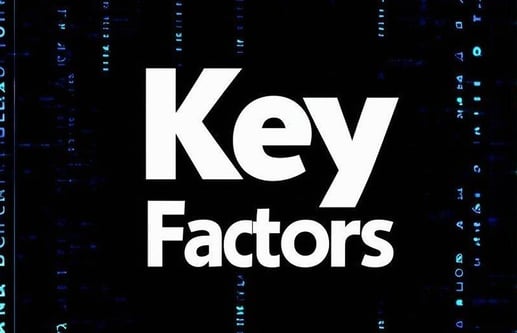How Sales Intelligence Transforms Competitive Landscape Analysis

What if you could predict your competitor's next move before they even make it? The old saying of keeping your friends close but keeping your enemies closer is just as true in the arena of sales as on the battlefield. Sales intelligence is reshaping how businesses analyze the competitive landscape, offering real-time insights that can sharpen strategies, enhance market positioning, and ultimately give you the edge you need to stay ahead.
In this article, we’ll explore how you can use sales intelligence to do exactly that.
Understanding the Competitive Landscape with Sales Intelligence

While different contexts demand differing approaches for an accurate competitive assessment, there are three key factors that almost any analysis will be predicated on:
Competitor Activity Tracking
The only way to stay ahead of the competition is to know exactly what they’re up to. Sales intelligence software can help monitor competitors and alert you about activities, such as product launches, marketing campaigns, and pricing changes.
Artificial intelligence jobs are also playing an increasingly vital role in developing sales intelligence tools, helping businesses track competitor activities with greater precision and speed.
This allows you to stay updated in real-time and respond with proactive strategies that take advantage of current market trends or prevent losing customers.
Plus, by analyzing competitor outcomes, you can get a sense of what works and what doesn’t without having to risk it yourself. This can range from subtle changes in your messaging to adjusting your prices to launching your own campaigns.
Market Share Analysis

Accurate market share analysis is crucial for benchmarking your company's performance, and sales intelligence tools make this process more precise. These platforms aggregate data from market reports, financial filings, and sales databases to offer a comprehensive view of your company’s market position relative to competitors.
Sales teams can analyze metrics like total revenue, customer acquisition rates, and geographic penetration to understand where they excel and where there’s room for growth. By comparing market share trends over time, businesses can spot gaps in their market strategy and capitalize on areas where competitors may be underperforming.
Pricing Strategy Insights
Sales intelligence can also track key metrics such as list prices, discount patterns, seasonal pricing changes, and promotional offers. By changing this data into actionable insights, this information helps sales teams anticipate pricing shifts and adjust their own strategies accordingly.
For instance, if a competitor frequently discounts their products, your team can decide whether to match those discounts or instead emphasize value differentiation. By closely monitoring competitor pricing, businesses can remain competitive without sacrificing profitability.
Turning Insights into Action

Gathering intel on your competitors only takes you so far. The real value of a sales intelligence platform comes in turning that data into actionable insights that feed into your marketing and sales strategies.
With that in mind, here’s how you can leverage your sales intelligence insights to get and maintain a competitive edge:
Identifying Gaps and Opportunities
Sales intelligence can analyze data like product features, customer feedback, and market demands to uncover gaps in your competitors’ offerings.
For instance, you may be able to spot that a competing product lacks a high-value feature or is receiving negative feedback. Issues may also not be product-specific but tied to customer service or weak messaging.
For example, a competitor's CRM may lack robust mobile support, which you find is a major pain point for your target audience. Your team could then plan marketing campaigns focusing on your mobile functionality as a USP and targeting it towards on-the-go professionals.
Refining Sales Strategies
By analyzing your competitor's messaging, you can identify the most impactful ways to position your brand in your own communications. This not only involves fine-tuning your messaging but also shifting your focus to different target markets or capabilities.
If a competitor is dominant in a particular niche, you can also decide whether to amplify your messaging to compete in the same space or pivot to an underserved market.
For instance, you can emphasize premium-level service and advanced features to counter your competitor's positioning as a low-cost option. Or, if you feel affordability is an area you can compete in, double down on it.
Anticipating Market Shifts
There are many forces that influence the market besides your competitors. Sometimes, getting ahead comes down to being the first to spot a new emerging trend or correctly reading the winds of change.
Sales intelligence platforms typically offer tools, increasingly powered by AI, to identify consumer and market patterns. This allows companies to forecast events and market changes with greater accuracy before they happen.
Still, if you see a competitor ramp up production or marketing of a particular product or shift to different market segments, it could be a sign that they’re on to something. Investigating these changes in competitors' strategies will allow you to be proactive instead of simply reacting to market forces.
Choosing the Right Sales Intelligence Platform

While we believe that sales intelligence is an essential tool for gaining a competitive edge today, every business will have unique requirements.
Here’s what you should be looking for when deciding whether a sales intelligence platform is right for you:
Key Features:
- Access to real-time data: The freshness of your data directly correlates to the advantage it gives your sales teams. Delays in data updates can cause missed opportunities or late reactions to market shifts.
- AI-powered analytics: Even with sales intelligence, finding patterns in all the noise can be challenging. Look for platforms that offer AI-powered features to analyze large datasets, spot patterns, and predict future trends.
- CRM integration: Your sales intelligence platform should integrate smoothly with your existing CRM as a single source of truth on your customers. This makes all your data easily accessible in one place, streamlining your processes.
- Advanced search: Robust search functionality allows your team to easily filter through large data sets and quickly find the needed insights.
- Data enrichment: Some platforms offer data enrichment services, where they append additional information—such as contact details, company size, or recent buying signals—to your existing records.
- Customization and scalability: You should be able to set up the platform to be as productive for your team as possible. It’s pricing, and resources should also be able to grow with your business and data needs.
- User-friendliness: There can be friction to adopting new software, so an intuitive and easy-to-use design is important to minimize it.
- Compliance: Your sales intelligence solutions must adhere to the same data protection regulations your company is subject to, such as HIPAA, CCPA, or GDPR.
- Pricing: You need to ensure that you get the most essential features at a price that’s within budget. Some charge a flat subscription fee while others use a per-seat pricing model.
Conclusion
In an increasingly dynamic, fast-paced, and competitive business environment, sales intelligence is no longer a nice-to-have, but a requirement.
Many sales teams and companies are catching on to is transformative potential. The market was already worth $3.99 billion in 2023 and is forecast to grow at a CAGR of 11.2%, capping 10.25 billion by 2032.
Its true potential lies in not only helping you stay ahead of the competition but also to understand and identify:
- Customer behavior
- Market trends
- Growth opportunities
- And, optimal pricing strategies
The good news is that, according to Fortune Business Insights, only 1.2% of companies have achieved maturity in B2B sales intelligence. This means that there’s still plenty of room to get ahead of the curve and become a leader instead of a laggard.
By gaining deeper insights with higher accuracy in less time, sales teams can pick winning strategies and drive revenue growth.